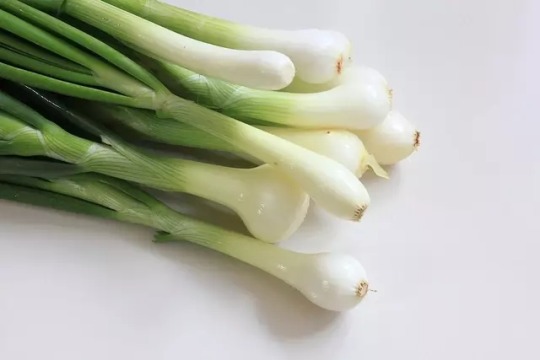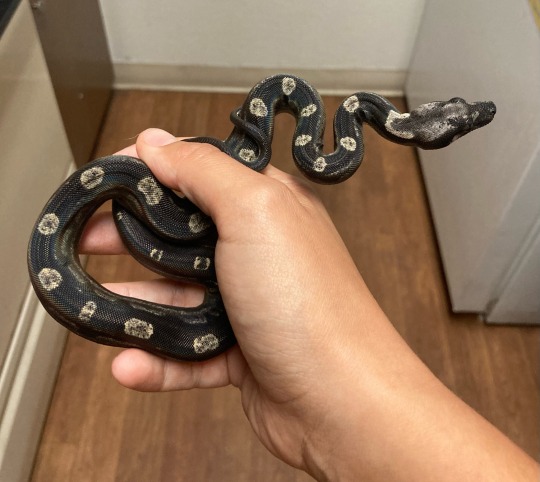#growing onions
Text
So, I decided I could start onion seeds early. I've never started onions from seeds, and my seeds are just the ones I've collected from an onion in my garden (if they grow for 2 years, they make a flower, and then the seeds are inside).
First I had to find some good containers, and this is where I got side tracked. I've been collecting plastic cups and food containers for years now, and I've just been putting them in the basement, not realizing how much I've got. So I grabbed all of the storage boxes and decided to see what I have. This is the sight that greeted me:

I became a little concerned, in anyone else's home this many containers would be considered garbage, but when I think more about it, it's a good thing for me to have them. I never bought any of these, I've gotten them from roommates, been given some as a gift, from people trying to get rid of them, some I've just found in the forests and creeks, some I've found in the trash and saved. While they're all with me, they're not in a landfill, and I'm dreaming of one day having a big garden that can feed lots of people, and at that point, it would be so great to never be out of little seedling pots.
I spent some decent time sorting these out in categories and stacking them to make them more manageable, these are the categories:

At this point I went to research how growing onion from seed works; I found out a lot! Firstly, they need to be planted very shallow, half of an inch. They should be started 8-10 weeks before planting outside, that also works out great, I can plant them out in March. They will germinate in one week, and sometimes their tops are stuck in the soil, and will stop them from growing; in that case it's best to cut the top off, than to pull it out. The plant is so fragile, you're likely to pull it all out. Cutting the top off will not hurt them, but make them grow more straight. I also found out that onions decide to bulb once they calculate that there's more than 10 hours of sun in the day, how cool! That's also why its important to start them early, and give them a good start before the days become long enough for them to go into bulb mode.
So last year when planting, I've been mixing some forest soil, old soil and sand into my planting mix, because that made the soil very light and airy, and I thought it would be good for the little plants. I've however noticed, that the plants were not doing great in that soil, even though they did succeed, it took them longer than usual. I've decided to just go with pure forest soil this time, no mixes or additions, that way it will have the max nutrients and I think it's what my plants are looking for.

These are the containers I've chosen; I've also put them in these big transparent cake containers, because when I close them up like that, water cannot evaporate out, and they're kept in high humidity, which will help the germination. After they start growing, I'll put them in normal trays.

I've decided to experiment a bit so for the left one, I put exactly one single seed in each space, but in the second one, I've peppered a lot of seeds, just to see what happens. I can always thin them out if a lot of them grow. Once on top of the soil, I've sprayed them with water gently, and then peppered some more soil on top so they're safely surrounded with soil.

And now we wait! Hopefully I'll have some onions next year :)
#growing food#stacking plant pots#growing onions#starting onions#gardening#inside plants#seedlings#sowing seeds#starting plants#soil mix#homesteading
41 notes
·
View notes
Text

4/20/24 ~ the onion scraps I throw in my compost bed grow better than the ones I actually plant 😅 that’s the way it works sometimes 🙃
#onions#growing onions#indoor garden#sustainable gardening#container gardening#vegetable gardening#starting seeds#growing food#plant life#plant mom#veganuary#homesteading#compost garden#compost#grow food not lawns
6 notes
·
View notes
Text
youtube
In many parts of Australia, Autumn is the best time to start planting onion seeds or seedlings, particularly in warmer areas because onions need a long cool growing season to develop well. Tino waits till it's consistently cold before he sows his onion seeds. Subscribe 🔔 http://ab.co/GA-subscribe
There are lots of onions you can grow at home, with long keeping onions able to be stored for many months after harvesting. Tino has chosen ‘White Gladolan’ onions to grow from seed, characterised by a white flesh and a sweet flavour. For the seedlings, he has chosen common brown onions, for their longevity.
Regardless of what type of onion you sow the cultivation technique is always the same.
Onions like a sweeter soil of around 6.5 pH, that is high in organic matter, but not overly rich. A bed prepped with aged sheep or cow manure is perfect.
They also love a full sun position and grow above the ground unlike their close cousin, garlic. So drainage needs to be good but it's not as important as it is for garlic.
Onions are also a great follow up to nitrogen hungry crops, like leafy greens and brassicas. That’s because if there’s too much nitrogen in the soil, onions tend to produce soft leafy growth, at times impacting bulb development.
Growing Tips:
1. You can grow your onions from either seeds, Tino’s preference, or seedlings, just make sure the plants aren’t too overly developed, otherwise, they can flower early.
2. Find a glass jar and half fill it with sand, add your seeds and mix together. The sand helps with drainage.
3. Fill the rest of the jar with dolomite lime which helps sweeten the soil with added calcium and magnesium.
4. Find a lid, tighten and give it a good shake.
5. Make a small hole in the lid then use it to pour the contents along a row of soil.
6. Then water with some added seaweed extract.
7. They need about 6 months in the ground
8. When the leaves yellow off, it’s time to harvest.
9. Store them in a dry dark place
Featured Plants:
ONION ‘WHITE GLADOLAN’ - Allium cepa cv.
ONION ‘BROWN’ - Allium cepa cv.
#gardening australia#Australia#solarpunk#gardening#garden#onions#how to#how to grow onions#tips#growing tips#growing onions#diy#do it yourself#Youtube
4 notes
·
View notes
Text
How to Harvest and Dry Onions
My father farmed onions for a season in Bakersfield, California to help his uncle. It was a good experience for them since the Texas crop failed and their onions brought a premium price. With his share of the profit my parents built their first home in Laguna Beach in 1948.
My father’s mother assisted the same farmer in his Oregon onion fields other years, pulling weeds when she wasn’t caring for an elderly friend. My sister lives near the property in Sherwood and the onion drying barn was still standing the last time I was there.
So there are onions in my lineage. But I must admit to being a lazy onion grower. I don’t usually start them from seed, choosing the easy way with onion sets. I especially like red onions so I buy a pound of the sets and push them into the prepared soil, usually next to the carrots. I also interplant them with brassica crops for an early green onion harvest.
The onion sets go in the ground in the fall about two inches apart. I pull them as needed at “scallion size.” Growth slows over the winter and with longer days I have “spring onions.” Then as days lengthen, the bulbs grow in size. I pull them for kitchen uses but they’re often growing too close together for proper bulb formation.
I was particularly neglectful this spring. The onions produced blooms earlier than usual and I didn’t deal with them. Most experts I read suggest harvesting the onions when the blooms appear. I didn’t.
I thought the onion flowers would work well—like white fireworks—in a Fourth of July bouquet. Good for the bouquet but not for the bulb onions.
Finally, this week I pulled the onions for drying as I needed the space for other crops. The bulbs were not large or particularly well-formed. Likely, they will not store well. They were not my father’s onions.
Avoid my mistakes and read two excellent short articles on growing, harvesting and drying onions. I should have been reading them earlier in the season.
How to Plant, Grow and Harvest Onions
How to Harvest and Store Onions
3 notes
·
View notes
Text
What You Need to Know about Growing Onions
Need help with how to grow onions in your garden? Understanding how onions grow and what conditions help them thrive will give you the best shot at growing large, healthy, and flavorful onions.

gardeninginfo-online.com gathered essential information and tips on growing big, healthy, and flavor-packed onions.
Growing Onions
Onions are a surprisingly easy vegetable crop to grow. They are typically planted early in the spring and can be harvested from midsummer through the fall. Whether you plant your onions from seed or sets, there are some valuable tricks that make a startling difference between an excellent onion crop and a disappointing one. Below is what you need to know about growing onions so that they are healthy and delicious:
1. How Long do Onions Take to Grow?
An onion’s growth typically requires 100 to 175 days before reaching maturity. In other words, onions take about 3 to 4 months from planting to harvest. If you want spring onions (green onions), harvest them 3 to 4 weeks after you’ve planted your sets.
2. What Month Should Onions be Planted?
In spring, plant onion sets outdoors as soon as the ground can be worked, usually in late March or April (when temperatures are no longer likely to go below 28°F). In spring, start onion seeds indoors about 6 weeks before transplanting them to the ground (once the soil reaches at least 50°F).
3. What is The Best Soil for Onions?
Onions grow best in well-drained soil with a 6.0 to 7.0 pH and high in organic matter. Apply phosphorus (P) and potassium (K) according to soil test recommendations.
Note: Basic soil tests identify its organic matter quantity, its pH, and macronutrient (nitrogen (N), phosphorous (P) and, potassium (K)) levels. These standard tests only provide information on soil characteristics.
Tip: Contact your local Cooperative Extension office. Most state universities provide top-quality, affordable soil testing services through their Cooperative Extension Service.
4. How Much Sun do Onions Need?
To grow large onion bulbs, they need to get enough daylight hours. Onions need full sun and at least 13 to 16 hours of light daily during bulb formation.
5. How Much Water do Onions Need?
Onions need about 1 inch of weekly water. Stick your finger in the soil near the plants – if you can’t feel moisture up to one inch, it’s time to water. In a typical 12-week growing season, irrigate with one inch of water once or twice a week, depending on the amount of rainfall.
6. How Many Onions Will One Plant Produce?

One bulb will produce one onion. Sets can be planted 2 inches apart if harvested as scallions or ‘green onions’ or 4 to 6 inches apart if allowed to mature into a full-sized cooking onion.
Note: By cutting off the bottom of an onion bulb and planting it in soil, you can grow an onion from cuttings. With time, patience, and water, you can grow an onion from an onion bottom in 90 to 120 days.
7. How do I Get My Onions to Grow Bigger?
Growing larger onions depends on a few factors, including:
Choosing the Right Variety (Onion varieties are typically divided into long-day, short-day, and intermediate-day).
Planting them on Time (Planting onions late will result in underdeveloped, smaller bulbs).
Control Weeds
Water and Fertilize
Note: Like other plant and vegetable species, your onions will grow better if given optimal conditions to thrive.
8. Which Onion Variety is Right for My Garden?
Long-day onions need about 14 to 15 hours of daylight to bulb (far northern regions). Short-day onions need 10 hours of daylight (far southern regions). Intermediate-day onion varieties are the most adaptable, requiring 12-14 hours of sunlight before starting to bulb.
9. Should Onions be Fertilized?
Yes. Onions are heavy feeders with shallow root systems, so adequate soil fertilization is essential for a high-yield onion crop. A nitrogen-based fertilizer (ammonium sulfate or ammonium nitrate) can be applied (one cup per twenty feet of row).
Note: The first fertilizer application should be about three weeks after planting, then continue with applications every 2 to 3 weeks.
10. Should You Soak Onions Before Planting?

You can undoubtedly plant onions without soaking them, but soaked onions will sprout more quickly. You can also soak onion seeds before planting to encourage their germination.
Note: Soaking onions in compost tea will give them added nutrition and increased protection from disease.
11. Will Onions Reseed Themselves?
Yes. Onions and scallions are self-seeding vegetables. These biennials overwinter and, in the spring, flower and produce seeds. You can collect these seeds or allow the plants to re-sow where they are.
Growing Onions in Your Garden
In this article, you discovered essential information on growing onions in your garden and answers to frequently asked questions.
Knowing what conditions onions require to flourish in your garden will help you grow larger and more flavor-packed onions in your home’s garden.
Ignoring basic onion growing requirements will leave your garden struggling to produce a healthy onion harvest.
Sources:
ohioline.osu.edu/factsheet/hyg-1616
extension.umn.edu/vegetables/growing-onions
extension.unh.edu/blog/2020/10/how-do-i-get-my-onions-grow-bigger
growingwithnature.org/perennial-onions/
The post What You Need to Know about Growing Onions appeared first on http://gardeninginfo-online.com.
0 notes
Text
Can’t decide what’s funnier- Benoit Blanc meeting his husband during a high stakes murder mystery or Benoit Blanc meeting his husband at like, the grocery store
#glass onion a knives out mystery#glass onion#benoit blanc#if it’s the first thing then you know it was a bickering-to-lovers situation#like Phillip thought he was completely ridiculous and overblown#and then they grow closer to the point where they’re flirting while like. some jackass is shooting at people right behind them#just them renacting the scene from clue#‘how do you even get into that position?!’ ‘well here let me show you’#if it’s the second thing then they keep just pumping into each other buying the same pretentious items#blanc just wears him down#personal
15K notes
·
View notes
Text





my favourite genre is women setting fire to their tormentor's homes/buildings and then walking out surrounded by flames
#they should also be covered in blood thank you#it's a specific genre but it is growing ❤️#carrie#ready or not#the invitation#glass onion#damsel#damsel spoilers#tropes compilation#my post
654 notes
·
View notes
Text
Vegetable garden: How to grow green onion indoors and properly store them
Vegetable garden: How to grow green onion indoors and properly store them
Green onions are so adaptable that they may be grown in practically any environment. They can be grown in a large garden, a small deck, or even just a sunny windowsill. Below, we will show you how to grow green onion indoors so that you will enjoy the fresh, pungent flavour of onions and use them in salads, soups, and casseroles.
Benefits of green onions
1. It promotes healthy bones
You can…

View On WordPress
0 notes
Text
Gender performance is my dad deciding to grow a mustache at age 50 and keeping it for as long as I’ve known him because “dads should have mustaches”
#A+ in gender performance Dr dad 👨🏻#text#friends will know I have absolutely said this before#but I literally haven’t stopped thinking about it since my older cousin told me that he said this#same way I still think about how my sister realised he doesn’t like onions when we were 20#bc he kept picking all the green onions off the tofu HE made and casting them aside#and even my mom didn’t know he didn’t eat onions#and he’s right…… If I ever become a dad I too shall grow a mustache……#btw my cousin had his baby last year and guess what is on his face rn
470 notes
·
View notes
Text

My greenhouse onions look like a school of fish, I love them! I wasn't sure I'd be able to grow onions in the aquaponic towers above the fish tank because, well, there's no soil and they're very squished in vertical towers, but they just went "no worries we'll adapt" and grew vertically in this nice ocarina shape
#crawling along#i am officially self-sufficient when it comes to onions!#which is a small but satisfying milestone#i've been able to grow enough for all my cooking needs continuously all year long#and also collect & use their seeds. so these are 3rd-generation onions
1K notes
·
View notes
Text

i just really think theyre SO alike,
#my art#naruto#kakashi#sakura haruno#like father like daughter#image desc in alt text#i think sakura grows up to have the same crushing kind of martyr “i have to give everything to save the people i care abt or im worthless”#complex that kakashi does#exacerbated by her being a mednin#like an “if i have the power to save people. if they die its 100% on me” kind of unhealthy brainwave#i think of all the kids he is most like her. thats my onion and ill share it gladly. have a slice of onion. have a slice of onion. have a s#anyway happy testosterone tuesday to those who celebrate!!!!#mwah mwah wishing u all good luck
692 notes
·
View notes
Text
No you don’t understand this is the first new Daniel pic in 3 months god I’ve missed you



#he’s back !!!#and he’s still growing his hair !!!#and he’s got actual nice glasses instead of yellow ones !!!#baby !!!#daniel craig#turns out this is from the 30th of March WHAT#why have i not seen this earlier#james bond#007#00q#benoit blanc#knives out#glass onion
105 notes
·
View notes
Text

Finally peeled and preserved the rest of the garlic cloves from the summer harvest. They’ve been in a bag separated but unpeeled and I’ve been slowly using them until now.
They’re not canned but instead hot vinegar is poured on the peeled cloves and they stay good all year in the fridge. The vinegar makes it to where no bad bacteria can grow on them and the enzymes from the garlic prevent the garlic from absorbing and tasting like vinegar. Just fish out however many cloves you need and use like normal!!
Hardneck cloves are in the jar on the left! They’re so much bigger and I like them so much more. Easier to peel, bigger cloves, and you get garlic scapes (delicious) before harvesting the bulbs. Last year I ordered mostly softneck and a little hardneck and this year I flipped it so that next year I’ll have primarily hardneck :)


Also, a lot of the newly planted garlics have popped! It’s not preferable for them to pop before spring but my weather is unpredictable and it happens every year. The cold will kill them but they’ll come right back in the spring 🌱
#this has been your routine garlic update#I need to research growing onions#I definitely want some next year#sooooo excited for next growing season#the best thing about February is that peppers get started :)#(the worst thing about February is the depression but let’s not talk about that)#gardening#garden#gardeners on tumblr#gardenblr#gardencore#food#garlic#preservation#vinegar
127 notes
·
View notes
Text
sometimes we buy onions but don’t use them before they start sprouting so my new thing is when one has sprouted a lot and i will go and plant it outside. “yeah that sounds normal and reasonable and if you do it properly that’s how you get more onions” i hear you saying. “who cares”
but i didn’t tell anyone except u guys that i’m doing that so think of how funny it will be when someone goes outside later maybe to plant something themselves and finds a non-negligible amount of onions growing in the backyard apropos of nothing. how did this happen? where did they come from? how long have they been here? they will wonder. who did this? why? i think this is a good post
244 notes
·
View notes
Text
Just so you know I’m aggressively waiting for my baby IMG motley boa (Burnt Toast) to finally shed so I can show the ‘increasing melanin gene’ in action because it’s such a cool concept that fits with this blog, and not simply because I need a valid excuse to post him and force you to see him with your eyes because I love him and you should too. He hasn’t even gone blue yet, so it might take a while unfortunately.

#mod talk#boa imperator#snake#reptile#selective breeding#boas grow slower than my baby colubrids :c#I could post other IMG boas but then it wouldn’t be my sweet angel baby#to be fair it’s not even been two months yet#he barely pooped last night I’m used to colubrids going once a week#just as a reminder basically an IMG boa slowly gets darker as they shed#and in combination with motley (the circle pattern) it makes for a nearly solid black snake#with iridescence#he’s already very dark for one his age I’m told#unfortunately I got my banana ball python as an adult so can’t post freckle development since bananas gain freckles as they age#his name is sweet onion chicken teriyaki (onion for short)#poptart has the best morph of all snakes ever (palmetto) so I will definitely post her
464 notes
·
View notes
Text

I think my onion braiding skills are starting to improve.
I planted these to use as spring onions, in a spot where I later planted tomatoes, so as much as I hate harvesting them this early, they had to go.
I usually harvest my onions in late autumn, when their leaves have long dried out and I have to use a shovel as you can barely tell there are any onions in the ground. That's when they're mature enough to last throughtout winter.
#onions#harvest#home garden#gardeners on tumblr#grow your own food#gardenblr#edible gardening#garden#gardenblog#gardening#gardencore
129 notes
·
View notes